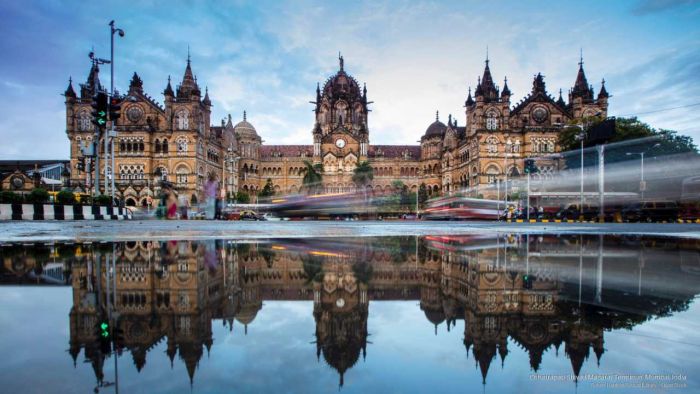
Oct 01, 24
The Ultimate Guide to Mumbai’s Iconic Landmarks
Mumbai, also known as the "City of Dreams," is India’s financial capital, a melting pot of cultures.....
Mumbai, also known as the "City of Dreams," is India’s financial capital, a melting pot of cultures, and a city that perfectly balances its rich history with modern advancements. From British colonial architecture to sacred shrines, Mumbai’s landmarks reflect its vibrant spirit and diverse history. Whether you're visiting for the first time or exploring it further, here's your ultimate guide to the most iconic landmarks in this dynamic city.
Gateway of India – Mumbai’s Crown Jewel
The Historical Significance of the Gateway
The Gateway of India is one of Mumbai’s most recognized structures. Built in 1924 to commemorate the visit of King George V and Queen Mary, this majestic arch stands proudly overlooking the Arabian Sea. It became a symbolic exit point for the British when the last of their troops left India in 1948.
An Architectural Masterpiece
Designed by George Wittet, the Gateway is an excellent example of Indo-Saracenic architecture, blending elements of Hindu and Muslim designs. Today, it serves as a gathering spot for tourists and locals, offering ferry rides to nearby destinations like Elephanta Caves.
Chhatrapati Shivaji Maharaj Terminus (CST) – A UNESCO World Heritage Site
Gothic Revival Architecture
Chhatrapati Shivaji Maharaj Terminus, formerly known as Victoria Terminus, is one of the busiest railway stations in India. It is a stunning example of Gothic revival architecture with its ornate arches, turrets, and stained-glass windows. Built in 1887 to commemorate Queen Victoria’s Golden Jubilee, CST remains a functioning railway station, blending its historic charm with daily urban life.
Importance of CST in Mumbai’s History
CST is not just a transportation hub; it’s a symbol of Mumbai’s colonial past. As a UNESCO World Heritage Site, it reflects the grandeur of British India and is a living testament to the fusion of Indian and European architectural styles.
Marine Drive – The Queen’s Necklace
A Popular Hangout for Locals and Tourists
Marine Drive is a 3.6-kilometer-long promenade along the coast of South Mumbai. This curved stretch of road is also known as the Queen’s Necklace because of the way its streetlights shine like a string of pearls when viewed from above at night. It's the perfect spot for a peaceful evening stroll or to catch a glorious sunset.
Stunning Views of the Arabian Sea
Marine Drive offers uninterrupted views of the Arabian Sea, making it one of the most picturesque locations in the city. It’s a popular spot for morning joggers, couples, and photographers looking to capture the essence of Mumbai’s coastal beauty.
The Taj Mahal Palace Hotel – A Symbol of Luxury
The History Behind the Iconic Hotel
Opened in 1903, the Taj Mahal Palace Hotel is more than just a luxury hotel—it’s a landmark that has witnessed some of the most significant events in India’s modern history. From hosting British royalty to surviving the 2008 terror attacks, the Taj stands tall as a symbol of resilience and grandeur.
A Luxurious Landmark and Its Global Recognition
The Taj Mahal Palace is known for its luxurious hospitality and has hosted world leaders, celebrities, and dignitaries. Its blend of Indo-Saracenic architecture and modern amenities make it a global icon of luxury and elegance.
Haji Ali Dargah – A Shrine in the Sea
A Blend of Spirituality and Scenic Beauty
The Haji Ali Dargah, built in 1431, is a mosque and tomb located on an islet in the Arabian Sea. Connected to the mainland by a narrow causeway, it becomes inaccessible during high tide, giving it an ethereal aura. The Dargah is dedicated to Pir Haji Ali Shah Bukhari, a revered Sufi saint.
The Story Behind Haji Ali
Legend has it that Pir Haji Ali left his earthly possessions to travel to Mecca. Upon his death, his followers carried his body back to Mumbai, where it now rests in this beautiful, peaceful shrine that attracts devotees from all religions.
Elephanta Caves – A UNESCO World Heritage Site
Ancient Rock-Cut Temples and Sculptures
Located on Elephanta Island, a short ferry ride from the Gateway of India, the Elephanta Caves date back to the 5th to 7th centuries. These rock-cut temples, dedicated to Lord Shiva, feature magnificent carvings, including the famous Trimurti—a three-headed representation of Shiva.
Exploring the Caves on Elephanta Island
The Elephanta Caves are a UNESCO World Heritage Site and offer a serene escape from the city’s hustle. The island is filled with greenery, and visitors can trek through the caves while admiring the ancient art and history that surrounds them.
Chhatrapati Shivaji Maharaj Vastu Sangrahalaya (Prince of Wales Museum)
A Treasure Trove of Indian Art and Culture
Located near the Gateway of India, the Chhatrapati Shivaji Maharaj Vastu Sangrahalaya (formerly Prince of Wales Museum) houses an impressive collection of ancient Indian artifacts, sculptures, and paintings. The museum’s galleries explore India’s diverse cultural heritage, from the Indus Valley Civilization to the Mughal Empire.
Colonial Architecture and Its Exhibits
The museum’s Indo-Saracenic architecture is a sight to behold, with its domes, towers, and columns. Inside, you’ll find exhibits ranging from ancient Indian art to artifacts from other parts of Asia.
Siddhivinayak Temple – The Temple of Lord Ganesha
A Sacred Place for Millions
Siddhivinayak Temple, dedicated to Lord Ganesha, is one of the most visited religious sites in Mumbai. Devotees flock to the temple to seek blessings, especially on Tuesdays, which are considered auspicious for Lord Ganesha.
The Temple’s Unique Architecture
The temple’s architecture, featuring a golden dome and intricately carved wooden doors, is as revered as the deity housed within.
